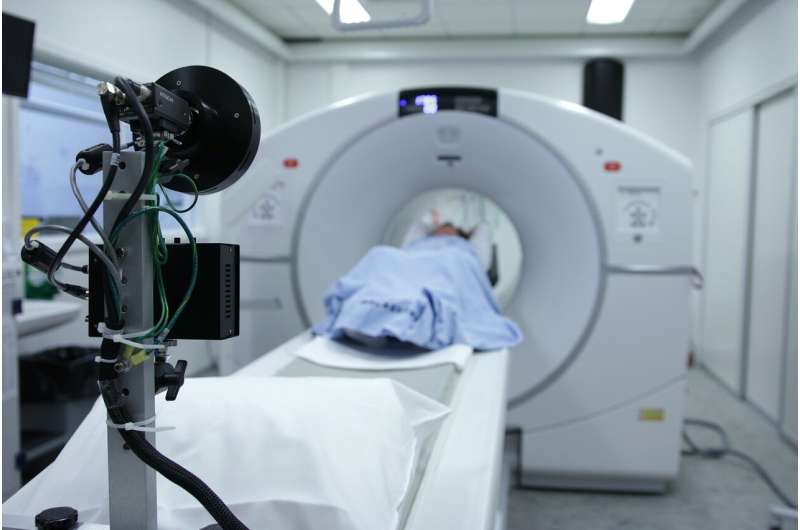Whole body imaging detects myeloma in more patients, treatment initiated earlier

Researchers from King's College London have shown that whole body magnetic resonance imaging (WBMRI) not only detects more myeloma-defining disease than positron emission tomography/computed tomography (PET/CT) with 18F-fluorodeoxyglucose (FDG) but that it also allows critical treatment to be initiated earlier.
In a study published today in the European Journal of Nuclear Medicine and Molecular Imaging, researchers looked at 46 patients with suspected myeloma, a debilitating bone marrow cancer which sees 140,000 new cases each year globally.
Less than 50 percent of patients survive after five years and at present it is not clear which is the best imaging test to use.
Lead researcher Professor Vicky Goh from King's College London said WBMRI is the most sensitive test for bone marrow infiltration by myeloma compared to PET/CT or CT alone as this type of imaging shows up different processes within the skeleton.
"Our results showed that imaging with WBMRI changed how patients would have been managed by their doctors in 24 percent of cases, where review of clinical data alone would have resulted in surveillance only."
"What this ultimately means for patients is improved outcomes from earlier treatment."
"WBMRI resulted in a decision-to-treat in an additional 7 percent of patients compared with PET/CT."
Professor Goh said that WBMRI & PET/CT only agreed on a positive diagnosis of myeloma in 59 percent of patients. Just under half of the patients did not have FDG-avid disease and would have been undetected by PET alone.
Professor Goh said the study supports national guidance for improving healthcare distributed by The National Institute for Health and Care Excellence (NICE) that WBMRI should be performed as a first-line imaging test for suspected myeloma.
"Earlier diagnosis and treatment is key to improving patient outcome. Forty percent of NHS hospitals still only perform X-rays, an insensitive test, for diagnosing bone disease in suspected myeloma. This clearly needs to change."
More information: undefined undefined et al. Comparison of the diagnostic performance and impact on management of 18F-FDG PET/CT and whole-body MRI in multiple myeloma, European Journal of Nuclear Medicine and Molecular Imaging (2021). DOI: 10.1007/s00259-020-05182-2


















